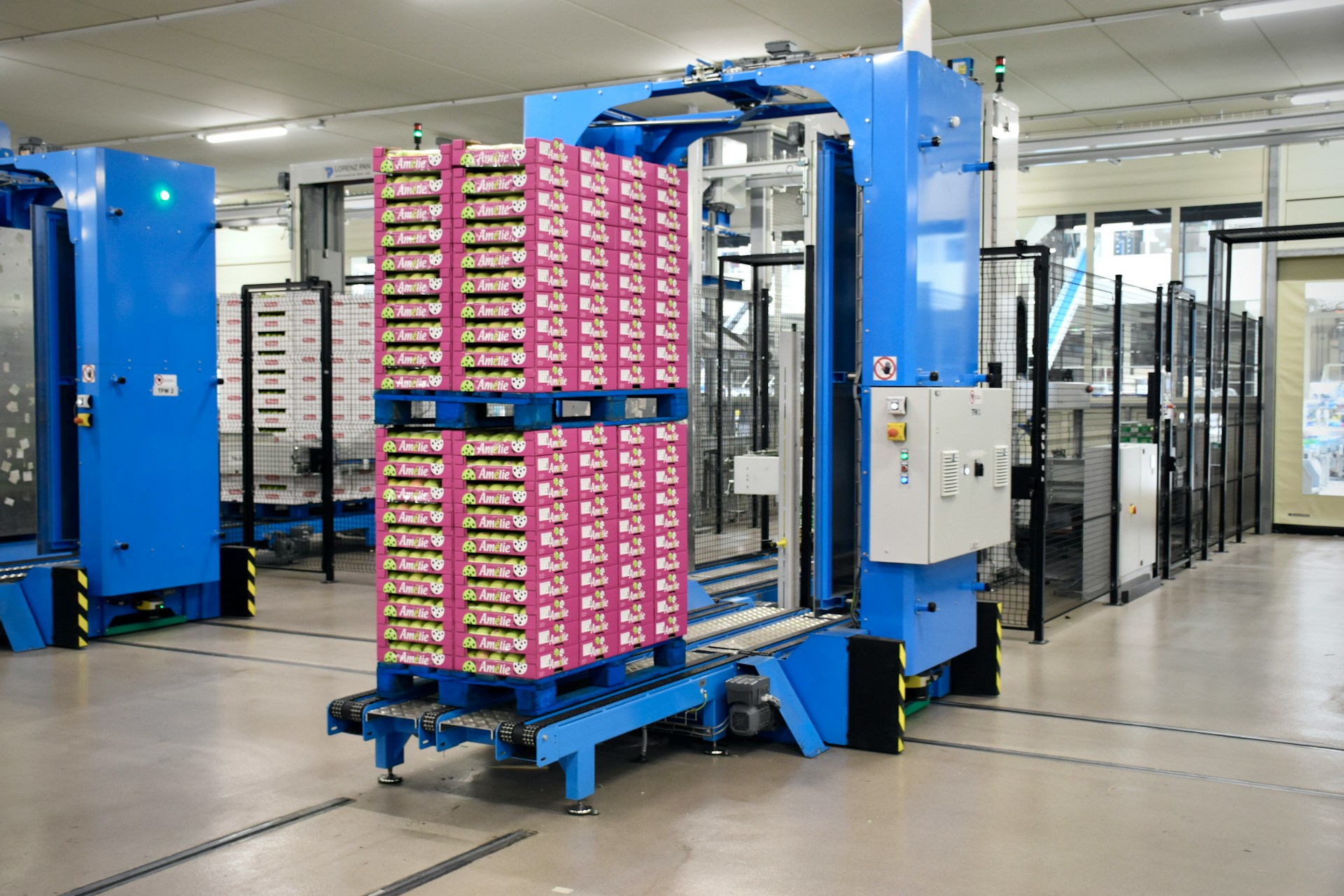Efficient warehouse management is a critical foundation for any produce distribution business seeking to provide timely, fresh, high-quality products to a varied client base.
One crucial aspect that significantly impacts the effectiveness of warehouse operations is staffing.
The proper deployment, management, and training of staff members directly correlate to the productivity levels of the overall operation.
In this context, clear and strategic planning in staffing becomes a fundamental component for success.
This article will delve into the key staffing strategies to enhance efficiency in produce distribution warehouses.
It aims to equip business leaders in this domain with practical insights to make informed decisions in their staffing protocols.
Contents
- Staffing Strategies For Efficient Produce Distribution Warehousing
- 1. Cross-training employees for multiple tasks
- 2. Utilizing Automated Resource Management Systems
- 3. Hiring Seasonal Staff during Peak Periods
- 4. Scheduling Staff Shifts Optimally for Productivity
- 5. Offering Competitive Wages to Attract Skilled Staff
- 6. Regularly reviewing and adjusting staff roles
- 7. Implementing a robust employee retention program
- The Bottom Line
Staffing Strategies For Efficient Produce Distribution Warehousing
1. Cross-training employees for multiple tasks
The concept of cross-training employees for various tasks in produce distribution warehousing serves multiple advantageous purposes.
Primarily, it ensures a highly versatile workforce capable of handling different job roles within the warehouse environment.
It equally reduces potential downtime that might happen when a specific staff member is unavailable or absent, and no one else is skilled in performing their duties.
In essence, cross-training insulates the warehouse operations from the potential impacts of staff absenteeism or a drastic staff turnover.
Moreover, it also aids in fostering a deeper understanding among the team members about the complexities and interdependencies across various warehousing tasks.
Employees who are well-versed in a variety of tasks often can contribute ideas for improvements and efficiencies across a greater spectrum of warehouse activities.
This workforce versatility enhances overall productivity and ensures smoother operations regardless of personnel changes or absences.
Despite its numerous advantages, cross-training requires an initial investment in terms of time and resources, which could deter some businesses.
However, the multiple long-term benefits like reduced downtime, improved productivity, and operational stability outweigh the initial costs.
The strategy of cross-training also sends a positive message to employees about their value within the organization.
It signifies that the organization recognizes their capabilities, invests in their growth and career development, and trusts their ability to carry out varied tasks efficiently.
Such an approach not only enhances employee morale and satisfaction but also promotes loyalty towards the organization, reducing the chances of staff turnover.
Thus, through cross-training, warehousing businesses cultivate a more proficient, adaptable, and resilient team, rooted in mutual respect and understanding of each other’s roles.
Further, it helps in maintaining a steady operational pace and ensures optimal functionality even during peak periods, thereby establishing a constant supply flow.
To effectively incorporate cross-training in their staffing strategy, businesses need to regularly assess existing skill gaps, identify potential cross-training opportunities, and plan comprehensive training modules accordingly.
Combining this with regular monitoring and feedback mechanisms, organizations can continuously refine their cross-training methods to better meet the specific needs of their warehouse operations.
All in all, cross-training employees for multiple tasks proves a strategic imperative in the pursuance of a robust staffing strategy for efficient produce distribution warehousing.
2. Utilizing Automated Resource Management Systems
Efficient warehouse operations require optimization of resources.
The implementation of an automated resource management system can significantly enhance this optimization.
These systems can handle a wide range of tasks including the management of employee shifts, inventory control and tracking, production planning and order processing.
Consequently, warehouse operations become more streamlined and efficient.
Through automated systems, managers can access real-time data, enabling them to make informed decisions on resource allocation.
For a produce distribution warehouse, this means that orders can be processed faster, leading to improved customer satisfaction.
Further, an automated resource management system can also help in reducing errors that may occur due to human handling.
These features contribute significantly to the overall efficiency of the warehouse operations.
For instance, automated systems can schedule for reordering of stock once it reaches a certain level, ensuring that the warehouse never runs out of items.
This results in less downtime for the warehouse, hence increasing its productivity and profitability.
Automated resource management systems are also programmable and customizable, meaning a warehouse management can adjust them to best suit their specific needs.
Additionally, these systems provide traceability, which comes in handy, especially for produce warehouses that have to adhere to various health and safety regulations.
Automation also eliminates the need for extensive paperwork, promoting a green work environment.
By adopting automated resource management systems, produce distribution warehouses not only improve their efficiency but also ensure there is minimal waste of resources – a key factor in ensuring sustainable operations.
The implementation of automated systems in managing resources is therefore, undeniably, an essential strategy in boosting the efficiency of produce distribution warehouse staffing.
3. Hiring Seasonal Staff during Peak Periods
One of the most critical staffing strategies for efficient produce distribution warehousing is the hiring of seasonal staff during peak periods.
This can be a game-changer especially in industries that experience significant seasonal fluctuations.
During peak periods, the demand for warehousing services tends to skyrocket, leading to an increased need for efficient staffing.
Taking on additional staff during high demand times can significantly enhance the warehouse’s capacity for timely product delivery.
These seasonal staff members not only increase manpower but also bring in fresh perspectives and potential new ways of doing things.
The hiring of seasonal staff should not just be viewed as a short-term solution, but as an opportunity to scout for potential full-time employees for the future.
It is crucial to provide thorough onboarding and training to these seasonal hires to ensure they are effectively integrated into the warehouse operations.
Furthermore, hiring seasonal staff can also relieve pressure off the permanent staff, allowing them to focus on their primary roles and responsibilities.
This strategy augments not only the operational capacity but also contributes to employee satisfaction and overall business success.
However, it is essential that these hires are managed effectively and that everyone is clear on their roles and responsibilities.
Good resource allocation and task assignment also play a critical role in ensuring the smooth running of operations with the inclusion of seasonal employees.
Use of tools like automated resource management systems can assist in this aspect by making it easier to schedule shifts, track workloads, and manage tasks.
Effective communication is paramount in fostering a productive working environment with seasonal staff members.
Ensuring fair treatment, providing competitive compensation and creating a supportive environment are strategies that can make seasonal employees feel valued and motivated to do their best work.
These elements combine to yield a well-oiled, efficient produce distribution warehouse capable of handling the pressures of seasonal demand, ultimately driving business success.
4. Scheduling Staff Shifts Optimally for Productivity
In a thriving produce distribution warehouse, effective staff scheduling plays a vital role in ensuring the efficient functioning of operations.
When it comes to productivity, the optimal scheduling of staff can make all the difference.
Not only it ensures that the right people are in the right place at the right time, but it also helps management to ascertain that the operations are running smoothly and consistently.
When employees do not have to stay behind their shifts or are not burdened with work due to a dearth of workforce during peak times, productivity generally appears to be considerably higher.
Furthermore, well-planned scheduling allows flexibility in operations by accounting for unexpected changes such as sudden orders or absence of staff.
An optimal staff schedule is not just about fitting staff availability to tasks – it’s also about making sure staff are working their most productive hours.
A well-designed schedule can ensure peak periods of business are well-staffed, supporting efficient order fulfillment.
This in turn guarantees high levels of customer satisfaction with the dispatch and delivery of products.
Therefore, implementing a sophisticated scheduling system can make a warehouse more productive and financially successful.
Moreover, a good scheduling system helps to balance the workload, preventing overworking and assisting in reducing job stress among employees.
Balanced workloads can contribute to higher staff morale and productivity, as employees feel their work-life balance is being respected and they are not overburdened.
Equally important is that effective scheduling also increases transparency in shifts, which means everyone knows what work they need to do and when, leading to fewer misunderstandings.
In turn, this transparency can lead to a decrease in absenteeism, increase in employee confidence, and thus, increase in overall productivity.
However, getting the scheduling right can be challenging, as it requires a thorough understanding of the warehouse operations and the ability to predict the ebb and flow of the business.
By leveraging technology and advanced scheduling tools, managers can get valuable insights into workflows and staff productivity, helping them make more efficient scheduling decisions, leading ultimately to a more efficient and productive warehouse.
5. Offering Competitive Wages to Attract Skilled Staff
One of the major strategies that can significantly impact the efficiency of produce distribution warehousing involves the recruitment and retention of skilled staff.
In the highly competitive logistics and distribution market, offering competitive wages is a critical aspect of attracting and retaining the right talent.
A competitive salary structure allows a company to attract experienced and skilled employees who can improve the overall performance and efficiency of the warehouse.
Wages should not just be competitive, but also reflect the tasks and efforts involved in the job.
Higher wages are a cost to the company but they can lead to significant long-term benefits.
By offering competitive wages, not only does the warehouse attract the best talent in the market, but it also motivates the workforce, which contributes to increased productivity and efficiency.
Besides, employees who feel well-compensated are likely to have higher job satisfaction, be more loyal to the company, and have lower turnover rates.
Lower turnover saves the company from the recurrent costs of hiring and training
It is also important that wages are reviewed regularly and adjusted based on market rates, employee performance, and the economic health of the company.
An organization that neglects to periodically reassess and readjust wages may find it difficult to retain its staff in the long run.
In the produce distribution industry, where timeliness and product freshness are key, the skill and experience of the warehouse staff can be the difference between success and failure.
Competitive wages, therefore, should be part of a wider strategy to attract, recruit, and retain the best staff.
It is important for warehouse operators to research their industry and location to determine what constitutes a competitive wage.
Offering a wage that is in line with or better than industry standards is an excellent way to appeal to top talent.
In conclusion, offering competitive wages to attract and retain skilled staff is a crucial part of any staffing strategy for efficient produce distribution warehousing.
6. Regularly reviewing and adjusting staff roles
In the context of Produce Distribution Warehousing, having the ability to adapt and adjust quickly to changes is a vital trait to maintain.
One of the practices that encourage such agility involves the regular review and adjustment of staff roles.
This strategy is not merely about recognizing the fluctuating demands of the warehouse and reassigning staff accordingly.
It’s also about identifying the hidden potentials of your workers, providing them with opportunities for growth, and leveraging their newfound skills for the improvement of warehouse operations.
Regular reviews of staff roles require a proactive approach to HR management.
Observation is the key here – observing your employees, understanding their strengths and weaknesses, recognizing their potentials, and adjusting their roles accordingly.
While regular role reviews might seem time-consuming, it can lead to significant improvements in the long run.
Initiating regular staff role reviews involves a mix of informal and formal assessments.
Informal assessments can happen every day; it’s about noticing the little things – an employee who takes the initiative to help others, or someone who takes on tasks beyond their role could be a potential candidate for role adjustment.
Formal assessments, on the other hand, can be done quarterly or yearly and involve a more structured approach.
These assessments are often based on pre-defined criteria and might include self-evaluation forms, performance metrics, and face-to-face meetings.
Once these assessments are done, the next step involves adjusting the staff roles.
This could mean promoting an employee to a higher role, providing new training for a different set of tasks, or even redistributing the workload among team members.
Remember, the goal here is to make sure that every role aligns with the employee’s capabilities, while also meeting the operational requirements of the warehouse.
Regular review and adjustment of roles is not an easy task, but it’s a crucial one to ensure that your warehouse staff is always on point, ready for any challenges that may throw upon them.
7. Implementing a robust employee retention program
Implementing a robust employee retention program is a strategic approach to preserving the best talents within your warehouse workforce.
This is crucial, as retaining the most talented and experienced staff reduces the cost and effort needed for recruiting, hiring and training new employees.
Moreover, it maintains the efficient workflow in the produce distribution warehouse, ensuring that operations run smoothly during all seasons of the year.
One strategy to increase retention rates in your warehouse is by offering growth opportunities to your staff.
Staff members are highly likely to remain with your organization if they see potential for personal and career development within the company.
An organization that recognizes, appreciates and compensates its employees’ hard work and dedication is likely to build a loyal and committed workforce.
Providing competitive remuneration packages can also be an effective method of retaining employees in your produce distribution warehouse.
Employment benefits, incentives, bonuses and pay raises can go a long way in ensuring employee satisfaction and loyalty.
Another retention strategy is the fostering of a positive work environment within the warehouse premises.
Employees are more likely to stay with an organization that values teamwork, respect, and workplace safety.
Engaging employees in decision-making processes and seeking their input on matters affecting them can boost their morale, hence, increase retention rates.
The management should regularly communicate with their staff, listen to their grievances, and address their concerns promptly and appropriately.
It is also advisable to offer flexible work schedules where possible, especially for workers with families or other responsibilities outside work.
A work-life balance can greatly contribute to employee retention in your produce distribution warehouse, enhancing overall efficiency and productivity.
Finally, an employee retention program is incomplete without an effective exit interview process.
This will help you understand why employees choose to leave, and provide valuable insights into how you can improve employee satisfaction and stem future turnover.
In sum, implementing a robust employee retention program is crucial in maintaining an efficient, productive, and stable workforce in a produce distribution warehouse.
The Bottom Line
The success of a business is ultimately dependent on its skilled and competent workforce.
Employing strategies such as cross-training employees for multiple tasks and utilizing automated resource management systems can pay dividends in terms of fluid operations and maximized productivity.
Scheduling staff optimally, adjusting roles as needed and offering competitive wages are also crucial steps towards attracting and retaining the necessary talent to drive the business forward.
Finally, the introduction of a robust employee retention program serves as an intrinsic motivator, fostering loyalty and a sense of belonging amongst staff.
The net result is a business that is not only profitable, but also sustainable in the long run.




